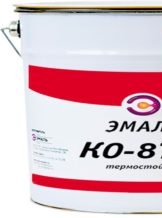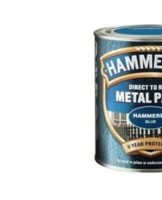Classification of types of primers according to different criteria and how to choose the best one
Finishing work on walls, ceilings, floors, buildings, wooden and metal products consists of several stages. The quality of the surface coating of paint and varnish, plaster layer, glued wallpaper largely depends on the correct choice of the type of primer. The variety of compositions allows you to choose a building material that meets the original base and the requirements for decoration or finishing.
What are primers
Surface priming is a preparatory operation when carrying out decorative finishing works.
Functional objective of priming:
- level the surface;
- strengthen the surface layer of the base;
- create a bond coat between the base coats and the finish.
The combination of these properties increases the durability of any coating. To carry out preparatory work, use primers. They are applied as the first layer on the surface prepared for painting / plastering.
Manufacturers offer a wide selection of these building materials for priming all types of surfaces.
Primers can include:
- drying oil;
- resin;
- polymer compounds;
- zinc and iron oxides;
- talc;
- mica;
- chalk.
Form of release of mixtures:
- liquid - aqueous organic suspension;
- solid;
- aerosol.
Apply the primer by hand (brush, spatula) or by spraying. Primers are produced ready-to-use or as a semi-finished product requiring preparation immediately before use. Before buying a primer, you need to understand the classification of finishing mixtures.

By membership
Depending on the content of the main filler, the primer is divided:
- on acrylic;
- alkyd;
- acid;
- formaldehyde;
- epoxy;
- highly specialized.
The main component of acrylic primers is an aqueous or organic solution of acrylic paint. Additional components change the viscosity of the primer, the rate of drying.
These include:
- drying oil;
- resin;
- mica, chalk;
- dryers.
According to these characteristics, the types of acrylic mixture are determined:
- deep penetration;
- adhesive;
- impregnation;
- reinforcement;
- universal.
There are also acrylic primers for wood, metal, concrete.

Alkyd compounds are a mixture of polymer resins. Depending on their concentration and additional inclusions, alkyd primers are subdivided:
- for glyphthalic;
- perchlorovinyl;
- polystyrene;
- polyvinyl acetate;
- alkyd-urethane.
Formaldehyde materials contain formaldehyde resins mixed with vegetable oils. Two-component epoxy consists of epoxy resin and hardener. Multicomponents have additives to increase the resistance of coatings to aggressive environments.
Anticorrosive, antifungal, fungicidal agents contain metal oxides, acids, antiseptics, biological products.

By properties and purpose
The main condition when choosing the type of primer is the material of the treated surface:
- Monolithic concrete walls and ceilings require penetrating primers to create a hard, porous film. They also contain cement and sand to roughen surfaces.
- Loose plaster walls are treated with a reinforcing compound, which contains a large percentage of adhesives.
- Wooden surfaces require impregnating and adhesion agents, which contain antifungal components.
- Adhesive primers with anticorrosive additives are applied to metal surfaces.
- Plasterboard, walls painted with oil paint are primed with adhesive mixtures.
When using alkyd primers, the type of paint should be considered. For example, PVC primer can only be combined with alkyd paints.

By litter
Depending on the toxicity of vapors and the strength of the film, primers are divided into compositions:
- for interior work;
- exterior work;
- universal.
For interior work, acrylic mixtures are usually used. Floors based on perchlorovinyl and polystyrene have a pungent and unpleasant odor and are only used for outdoor use.

Penetration ability
Deep Penetration Primer is an aqueous-acrylic dispersion. The polymer molecules are absorbed into the surface with the water. Once the water evaporates, the acrylic bonds to the surface material, dusting, strengthening and leveling the base.
Deep penetration primers differ in the percentage of dry matter in the solution, which affects the purpose and method of using this grade of primer.
Solutions can be used:
- For indoor or outdoor use;
- before plastering;
- The painting;
- glue wallpaper;
- masonry tiles.
Finishing materials may be suitable for several stages: before painting/wallpapering; before plastering / painting; before plastering, painting and gluing.

How to choose a primer
The guideline when choosing a primer composition is the following information:
- basic material;
- its physical state (porosity, corrosion, fungus);
- external influence on the treated surfaces (humidity, temperature drops);
- other decorative finishing operation.
Based on the information received, it is decided which primer should be used.
Surface to be treated
For some types of substrates, special primers are used. Universal solutions are used for 2-3 types of bases.

Concrete
Concrete walls and ceilings are treated with acrylic, alkyd and epoxy primers. For exterior work, acrylic solutions based on organic resins are used, on internal surfaces - water-based. Perchlorovinyl and glyphthalic soils are selected from alkyd soils. Interior walls and facades are treated with glyphthalic primers and exterior walls are treated with perchlorovinyl primers.
Contact primers for concrete based on acrylic resins and mineral shavings are particularly common in construction. As a result of processing, a vapor-permeable rough film is obtained, on which all types of cement and gypsum plaster can be applied.
TREE
Painting with an acrylic primer with an antiseptic improves the adhesion of the finish and also provides protection against rot and mildew and bark beetles. Treatment with formaldehyde compounds gives a uniform and durable film compatible with all types of enamels, except organosilicon.

Metal
Alkyd primer varieties are suitable for metal surfaces. Alkyd Urethane Primer is for metal use only. Alkyd primers form a protective film that adheres well to enamel paints.
Phenol-formaldehyde and epoxy primers create a high strength elastic film and are used to achieve a high quality enamel coating on automotive parts.
Mineral surfaces
Blockwork, drywall and plaster surfaces require the use of impregnating and bonding primers.
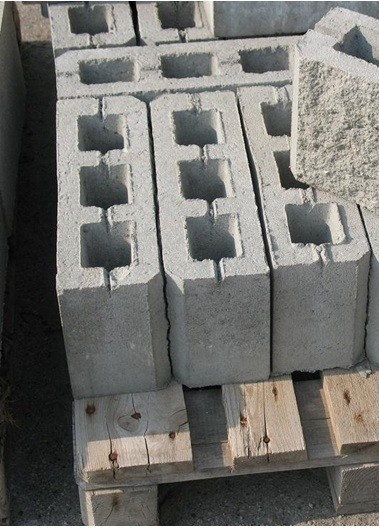
For walls and bricks
Before plastering, brick walls are painted with primers that have a good connection with cement and gypsum plaster (contact with concrete). A good result is achieved by treatment with a water-based penetrating mixture that reduces moisture absorption, leveling the surface.
Color and additional properties
The aqueous acrylic solution is white. Any soluble pigment can be added if desired. The concrete contact is produced in pink so that there is a possibility of visual control over the priming process.
Glyphthalic primers are a mixture of organic pigments and resins. The choice of color depends on the manufacturer's proposal. Other alkyd primers are gray, dark gray. Epoxy and formaldehyde compounds have a greenish or brown tint when dry.
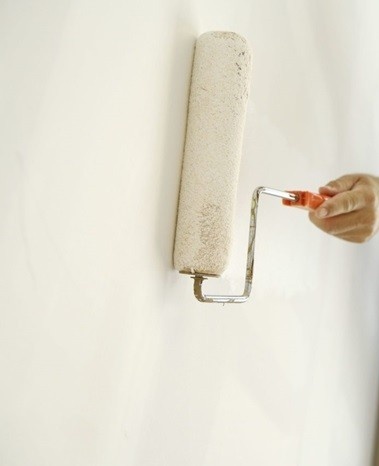
Universal
The purpose of the universal primer is to create an intermediate layer between the base and the topcoat. Due to its composition, it has the properties of impregnating, strengthening the base, giving a good connection with the next layer. Multi-purpose primers include acrylic primers and glyphthalic primers.
Deep penetration
Soft surfaces (brick, cement and lime plaster) are reinforced with deep penetrating water-based acrylic primers.
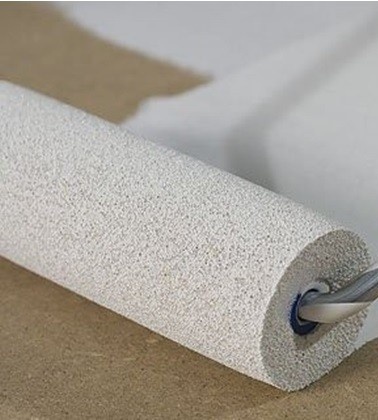
Anti corrosion
Anti-corrosion floors are conventionally subdivided into:
- insulating;
- protective;
- phosphate.
Insulating (glyphthalic) compounds do not react with the metal, forming a stable zinc oxide film. Designed for ferrous metals. In tread floors, the percentage of zinc oxide is 90%, due to which the coating can withstand the effects of aggressive environments. It is used for non-ferrous and ferrous metals. Phosphate primers prevent corrosion, give good adhesion to enamels.
Ferrous metal products affected by rust are treated in two stages: at the first stage, a special soil is applied - a rust converter; on the second - alkyd / epoxy composition. The rust converter consists of strong acids (sulphuric, hydrochloric), zinc oxide or manganese.
Phenol-formaldehyde and epoxy primers are used to achieve a high quality enamel coating.

Antifungal
The wood is treated in several stages. Initially, it is necessary to protect organic matter from biological pathogenic effects. For this, the surface is impregnated with antiseptic primers two to three times. After complete drying, paint with acrylic, glyphthalic, polystyrene primers with antifungal components.

What do masters recommend when choosing a mixture of primers
The following primer mixtures are used depending on the type of substrate and the type of decorative finish to come:
- on crumbled and loose surfaces - deep penetration;
- on uneven, moisture-absorbing - universal;
- in weakly absorbent contact - concrete.
Deep Penetration Primer should not be applied more than 2 coats, as the connection with the finishing material may diminish.
Primer is needed when the finishing material has poor adhesion to the substrate or corrodes it (eg glass or plastic). In such cases, for example, mixtures of epoxy and formaldehyde are used.
Water-based acrylic primers are not suitable for metal, glass and plastic. High viscosity alkyd solutions are not used on mineral surfaces. To obtain a high-quality decorative coating, it is necessary to observe the drying time of the primer established by the manufacturer.
The quality of epoxy and formaldehyde films depends on two interdependent factors: the viscosity of the mixture and the method of application. For the manual method, the viscosity must be higher than for the mechanical method. Priming is done on a prepared surface.
Concrete, mineral, brick surfaces are cleaned of dust, crumbled particles. Degrease metal products, remove rust mechanically. The woods are degummed, dusted, mechanically removed the areas damaged by an insect or mold.

